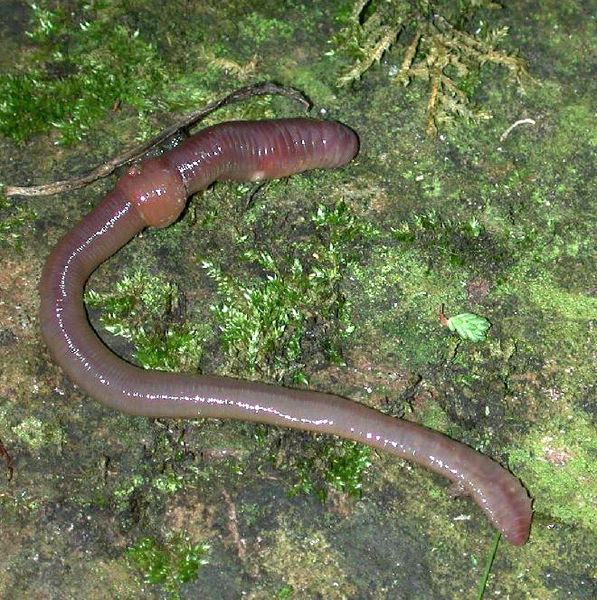News Update - Elastin and Earthworms
Interview with
Meera - This is the April edition of the Diamond Light Source Podcast with me, Meera Senthilingam and this month we're attracting your attention with magnetic forces as we explore the atomic nature of magnetism. But, before we continue luring you down to the atomic scale, let's join Sarah Boundy from Diamond's Communications Team to find out what's been happening at the facility over the past couple of months, starting with a particularly notable visitor.
Sarah - Yes, in the middle of March we had a visit from David Willets who is the Minister for Universities and Science. He toured the synchrotron and met Diamond scientists and representatives from some of our industrial partners; that included GlaxoSmithKline, Rolls Royce, Evotech and Infinium UK and whilst he was here he officially inaugurated Phase 3, so that's our next 10 beamlines which he said he was delighted to confirm the funding for and he also said that Diamond is one of the really great scientific research facilities, not only in Britain, but around the world.
Meera - Well it's good that he met some of the scientists that are based here at Diamond because you've had some interesting papers published recently as well?
Sarah - Yes our publications database is going strong. We've now got over 1,250 published papers there. A recent highlight is work carried out on I22, that's our non-crystalline diffraction beamline, and the work was published in the American Journal PNAS - the Proceedings of the National Academy of Sciences. Researchers from the Universities of Manchester, Texas, Cardiff and Sydney used Diamond as well as the European Synchrotron Radiation Facility (ESRF) in Grenoble, France and the Advanced Photon Source in Chicago and they were using the X-ray facilities to determine the structure of Tropoelastin, that's the main component of Elastin, which is what allows tissues in humans and other animals to stretch. For example, when the lungs expand and contract for respiration, or when arteries widen and narrow over the course of a billion heartbeats, it's elastin that helps them to do this.
Meera - and what did they find out about its structure?
Sarah - They discovered that tropoelastin is a curved, spring like material which can extend to 8 times its initial length and return to its original shape with no loss of energy.
Meera - I guess this could have applications in synthetic polymers to make elastics?
Sarah - Well yes, elastics are used in applications as diverse as clothing, vehicles, tissue engineering and even space travel, so understanding how the structure of tropoelastin creates its exceptional elastic properties could enable the development of synthetic elastin-like polymers with potentially wide ranging potentials and benefits.
Meera - As well as this research, there's been more developments in a topic 
 that we've covered in the past about metal-munching earthworms?
that we've covered in the past about metal-munching earthworms?
Sarah - Yes, previously on the podcast we've heard from Mark Hodson from the University of Reading who's looking at the potential of earthworms as eco warriors, cleaning up toxins from contaminated soil. So he and his colleagues have published their latest findings using I18 which is our microfocus spectroscopy beamline. They were looking at tiny granules which were not quite 1 mm long and they were granules of calcium carbonate which is actually the main component of snail shell. These granules are excreted by earthworms that have been living in lead-contaminated soil. The group found that the excreted granules contained a substantial amount of lead meaning that the earthworms are able to ingest the lead which is then excreted out as a insoluble metal carbonates, potentially immobilising the metal and making it less available to plants.
Meera - So giving them a use in lead contaminated sites then?
Sarah - The granules did pick up a lot of lead, but the problem is that the granules are so small, they pick up less than 1% of the lead from the soil. So although the earthworms can survive in these toxic environments, the granules won't have a big impact on lead.
Meera - So what's next then, what could those be used for?
Sarah - The next step is to leek at different elements within the granules such as strontium and zinc. They might be concentrated more heavily and have more of an effect.
Meera - As well as the papers being published by scientists working here, they do need access to beamlines. What new beamlines have been developed?
Sarah - So we've had first light on I20, that's our X-ray spectroscopy beamline, also known as LOLA. It's going to be our 3rd spectroscopy beamline and our twentieth operational beamline when it comes online later this year. I20 will be used for chemistry, biology, environmental sciences and material sciences.
Meera - So spanning a wide range of disciplines. And lastly what about outreach, that's something you're always doing here at Diamond.
Sarah - At the end of February we took part in the Oxfordshire Science festival and we've just got back from the Big Bang Fair in London. We had some great hands-on activities that helped to explain how out magnets work in the machine and what kind of research Diamond is used for.
Meera - And what about regular members of the public wanting to visit Diamond. When's the next Inside Diamond day?
Sarah - The next Inside Diamond day is coming up really soon, but as usual it is already fully booked. The next available date is in June and people can find out more on our website.
Meera - Sarah Boundy from Diamond's Communications team.
- Previous Multiferroics
- Next Magnetic Anapoles










Comments
Add a comment